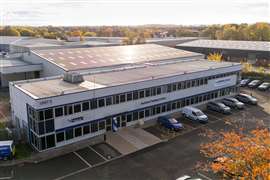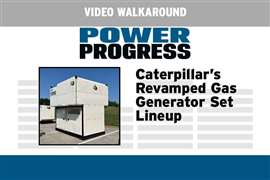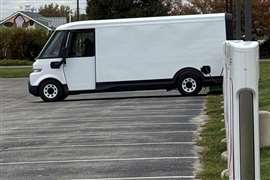Read this article in Français Deutsch Italiano Português Español
Damen launches first H2-capable Windcat CSOV
14 October 2024
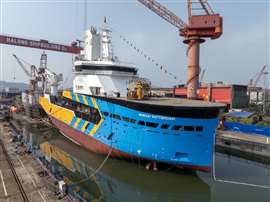 Damen, Windcat and CMB.TECH celebrated the launch of the first of six future-proof Commissioning Service Operation Vessels. (Photo: Damen Shipyards)
Damen, Windcat and CMB.TECH celebrated the launch of the first of six future-proof Commissioning Service Operation Vessels. (Photo: Damen Shipyards)
Damen Shipyards, Windcat and CMB.TECH have launched the first of six Commissioning Service Operation Vessels (CSOV), marking the inauguration of the Windcat “Elevation Series” of future-proof offshore wind farm maintenance and support vessels. Damen, specialist crew transfer services company Windcat and CMB.TECH first announced their intention to develop and build the series together back in 2022. After an initial contract for two ships, Windcat increased the order to six vessels, with the last contract being signed in mid-2024.
The launch ceremony was held on Oct. 12 at Ha Long Shipyard in Vietnam, where Damen is constructing the vessels. Damen plans to continue with its outfitting and commissioning operations to prepare the vessel for delivery in Q2 2025.
The 87 m long, 20 m wide CSOV will accommodate up to 120 people on board, remaining at its offshore location to provide in-field technical and maintenance support for up to 30 days at a time. Particular attention has been given to providing offshore personnel with comfortable conditions to live and work during their time on board.
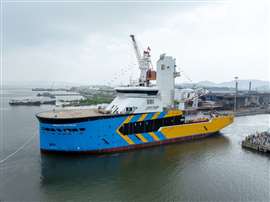 The 87 m long, 20 m wide Windcat CSOV will utilize CMB.TECH dual fuel hydrogen technology. (Photo: Damen Shipyards)
The 87 m long, 20 m wide Windcat CSOV will utilize CMB.TECH dual fuel hydrogen technology. (Photo: Damen Shipyards)
The CSOV will incorporate the same CMB.TECH dual fuel hydrogen technology used on the Windcat Hydrocat Crew Transfer Vessel (CTV). The Hydrocat is powered by two MAN D2862 LE488 engines and retrofitted by CMB.TECH with a hydrogen injection system and fuel tanks that can store 207 kg of hydrogen. The Elevation Series will also be able to use hydrogen as a fuel, increasing this hydrogen use as the energy market progresses.
“We want to be a leading energy efficient and future fuel shipping company,” said Willem van der Wel, managing director, Windcat. “We are going to use hydrogen from day one of delivery of these vessels to make sure we can learn from it today - and when the supply chain is there, we can quickly ramp up to do more.”
“We are especially proud of the efficiency gains that this vessel is expected to deliver,” said Joost van der Weiden, Damen sales manager Benelux. “The hybrid-electric propulsion system coupled with an efficient power distribution system means that there will be no need to run a backup diesel generator, and the vessel will never use more power than necessary.”
The vessels also incorporate an optimized thruster configuration to enhance dynamic positioning during transfer operations, he noted. “All in all, we expect innovations like these to add up to substantial reductions in fuel consumption and, therefore, emissions.”
POWER SOURCING GUIDE
The trusted reference and buyer’s guide for 83 years
The original “desktop search engine,” guiding nearly 10,000 users in more than 90 countries it is the primary reference for specifications and details on all the components that go into engine systems.
Visit Now
STAY CONNECTED




Receive the information you need when you need it through our world-leading magazines, newsletters and daily briefings.
CONNECT WITH THE TEAM











